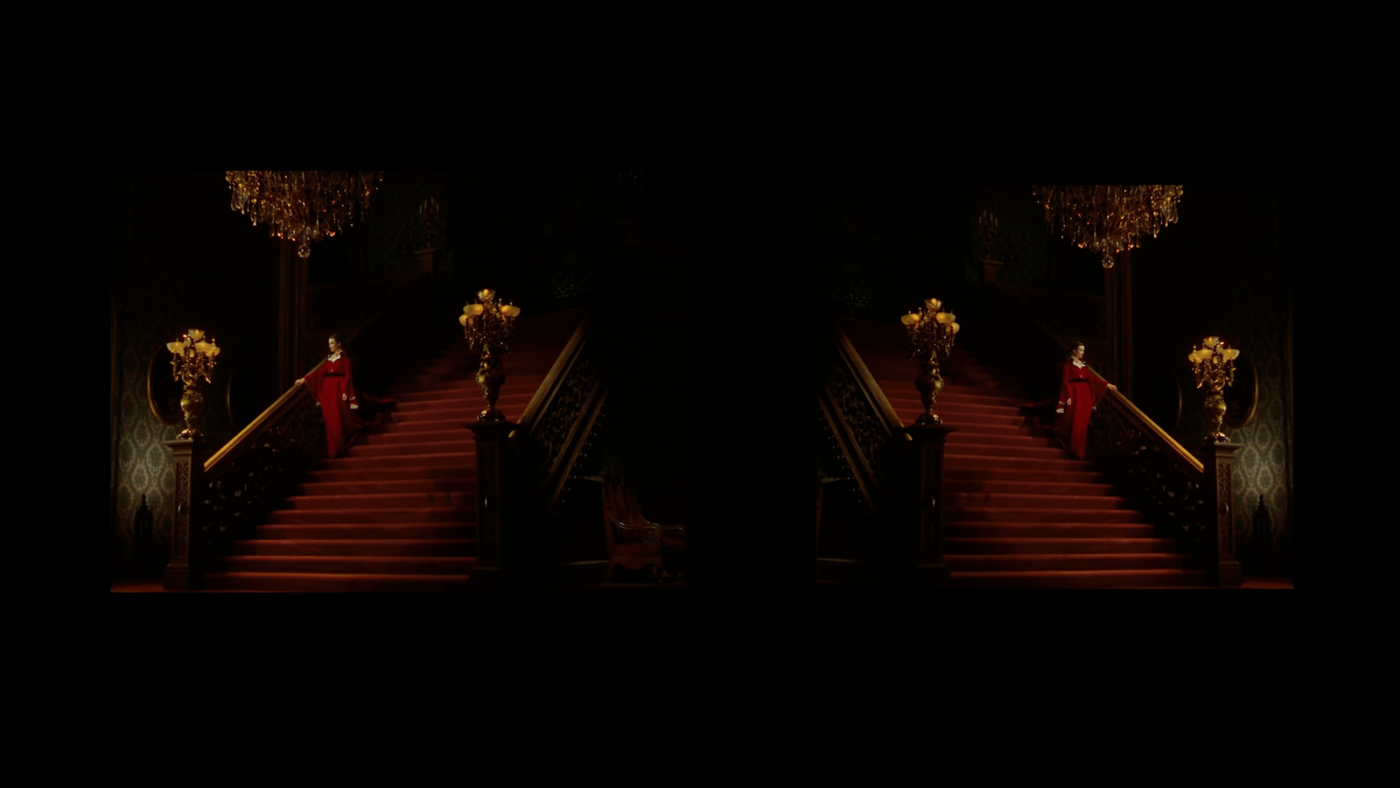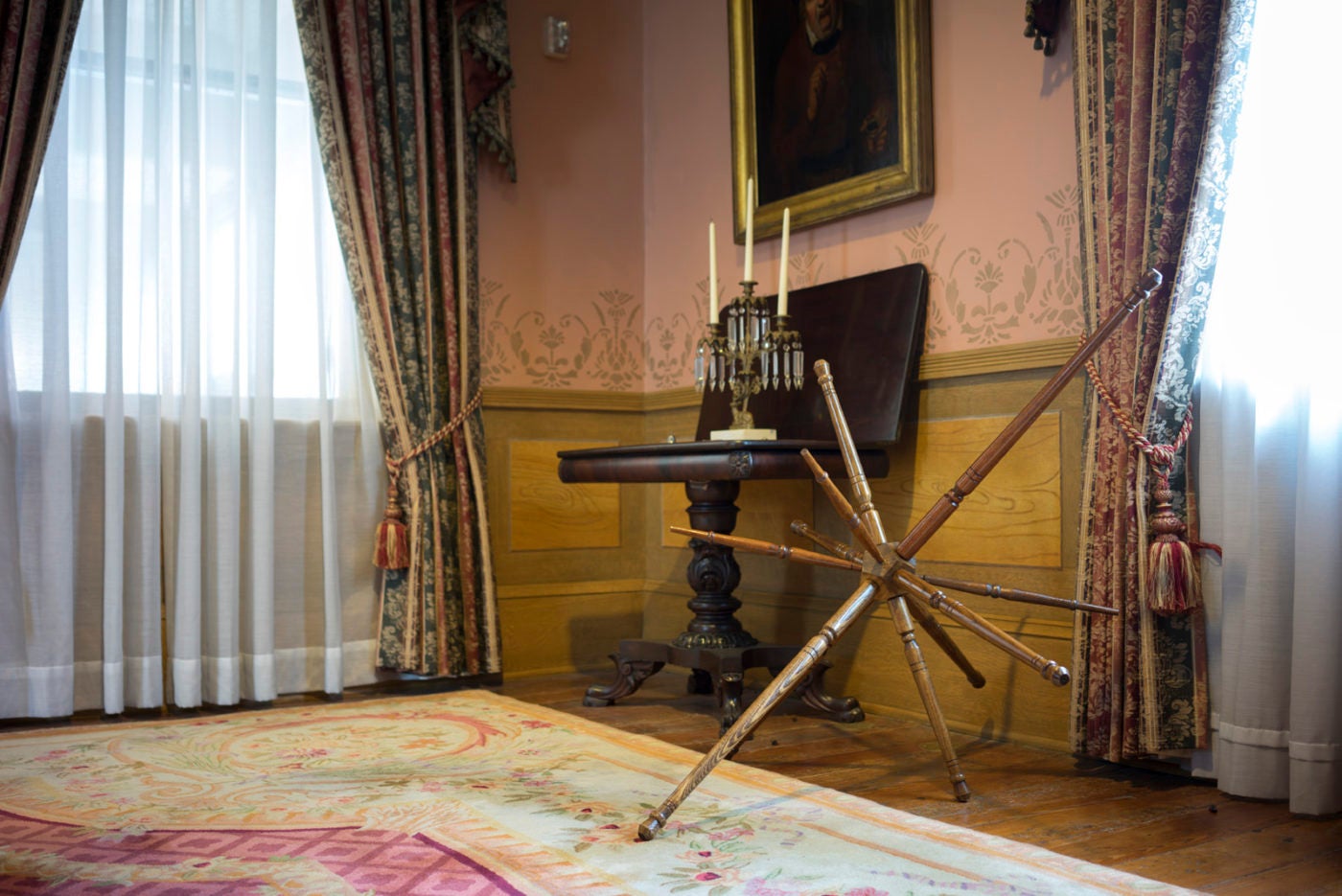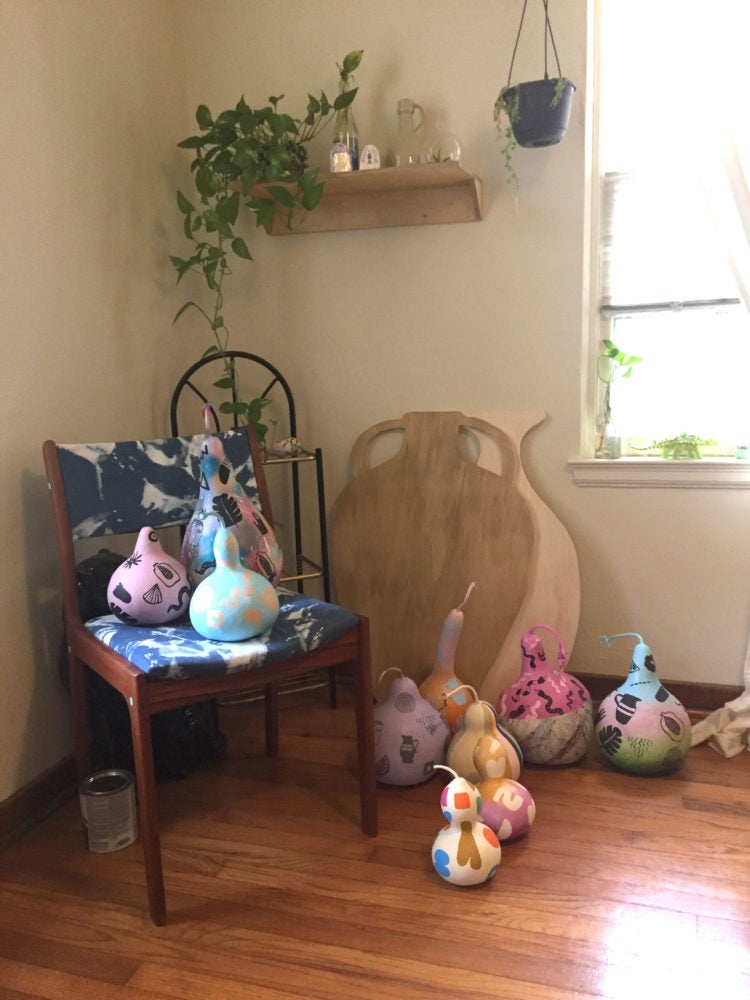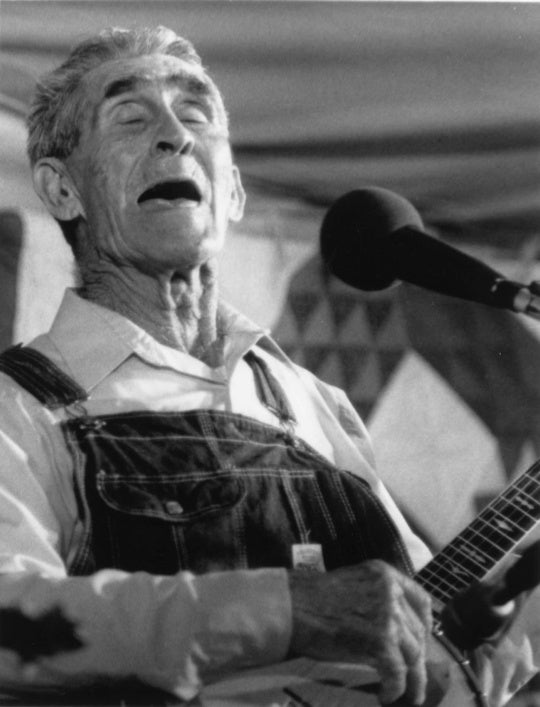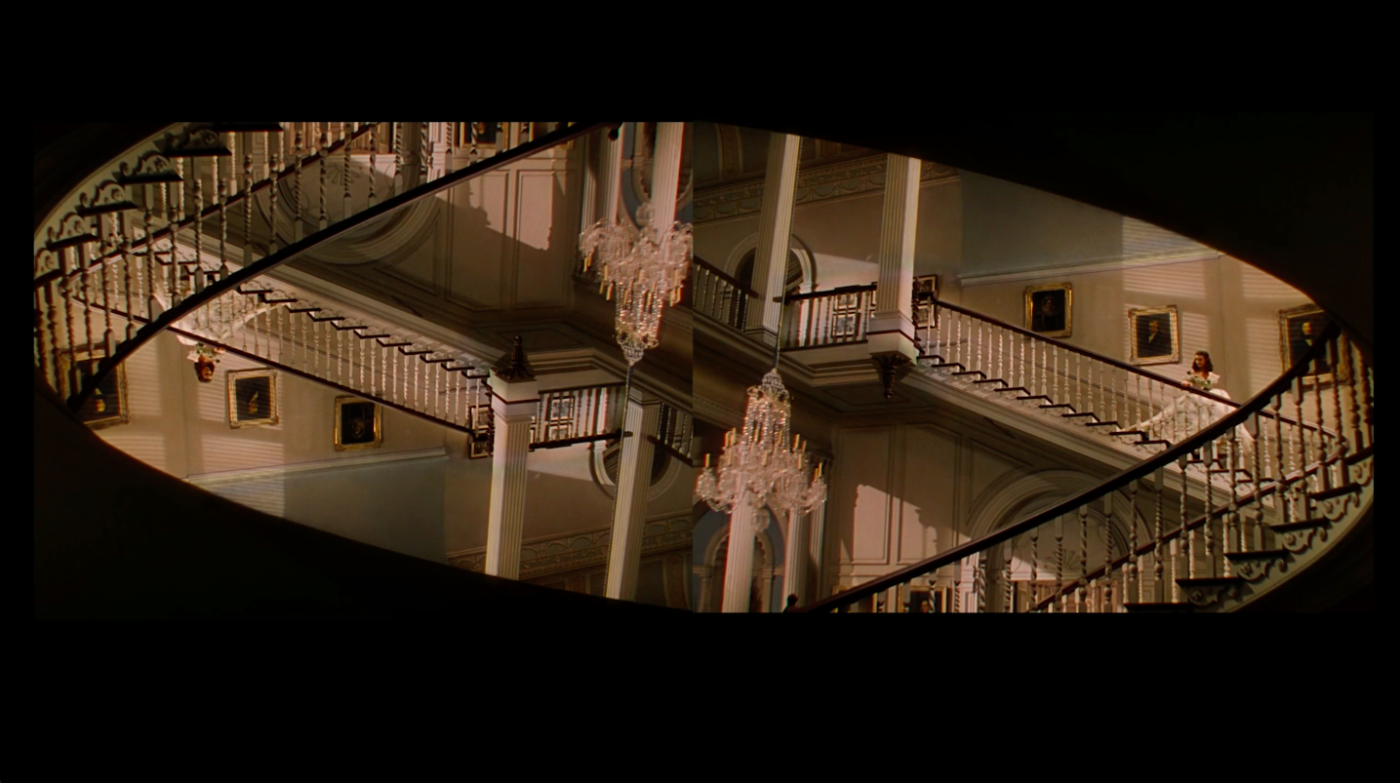
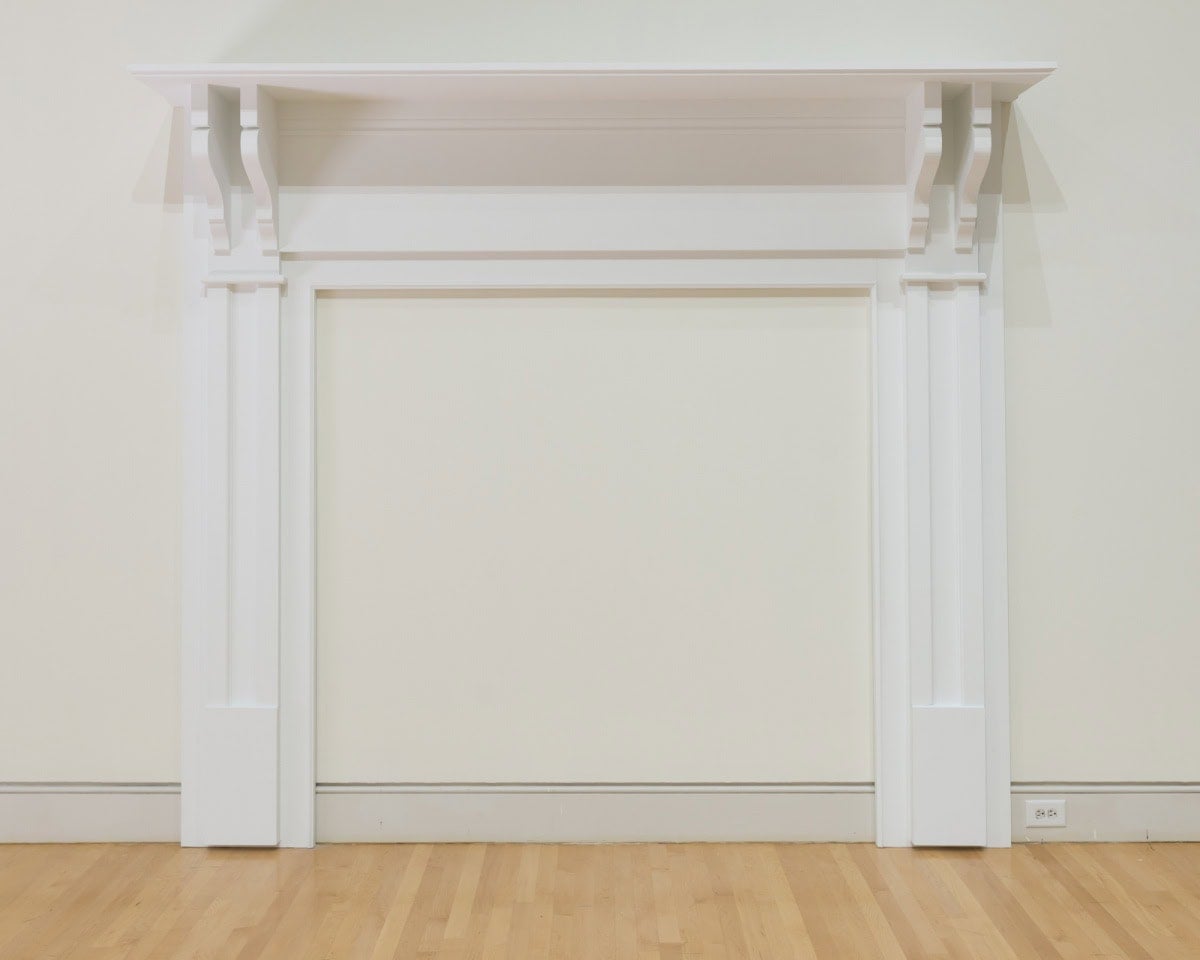
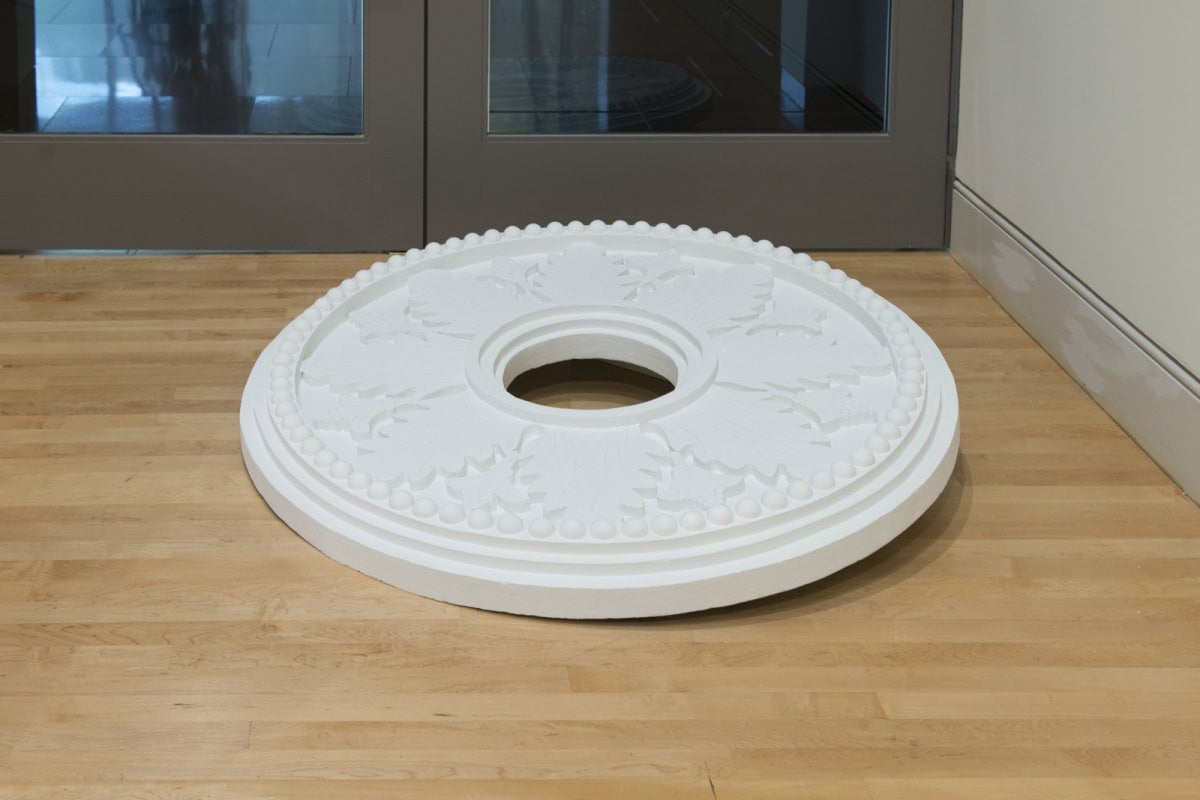
Varied forms of making influence each component of artist Kaleena Stasiak’s work, a combination of domestic craft practices such as gourd painting, macramé, quilting, and flag making with more conceptual, formal endeavors in sculpture, printmaking, video art, and performance. Her sculptures resemble matrixes for printmaking, flattened objects that could be inked up for a relief print. In her MFA exhibition at the Georgia Museum of Art in 2018, Kaleena built enlargements of a crown molding, columns, a mantle, and a ceiling medallion, propping them against the walls and placing them precariously on the floor. By enlarging these neoclassical symbols of power, Kaleena makes a mockery of them. In their residential and commercial use today, these architectural features rarely serve their ostensible purposes but are instead purely decorative objects that can be purchased from a hardware store and installed in any home for the sake of style or projection of wealth. Blown-up and funny, the pillars, crown molding, and fireplaces are visually and conceptually flattened to the point of becoming large-scale symbols or emojis.
—Emily Llamazales
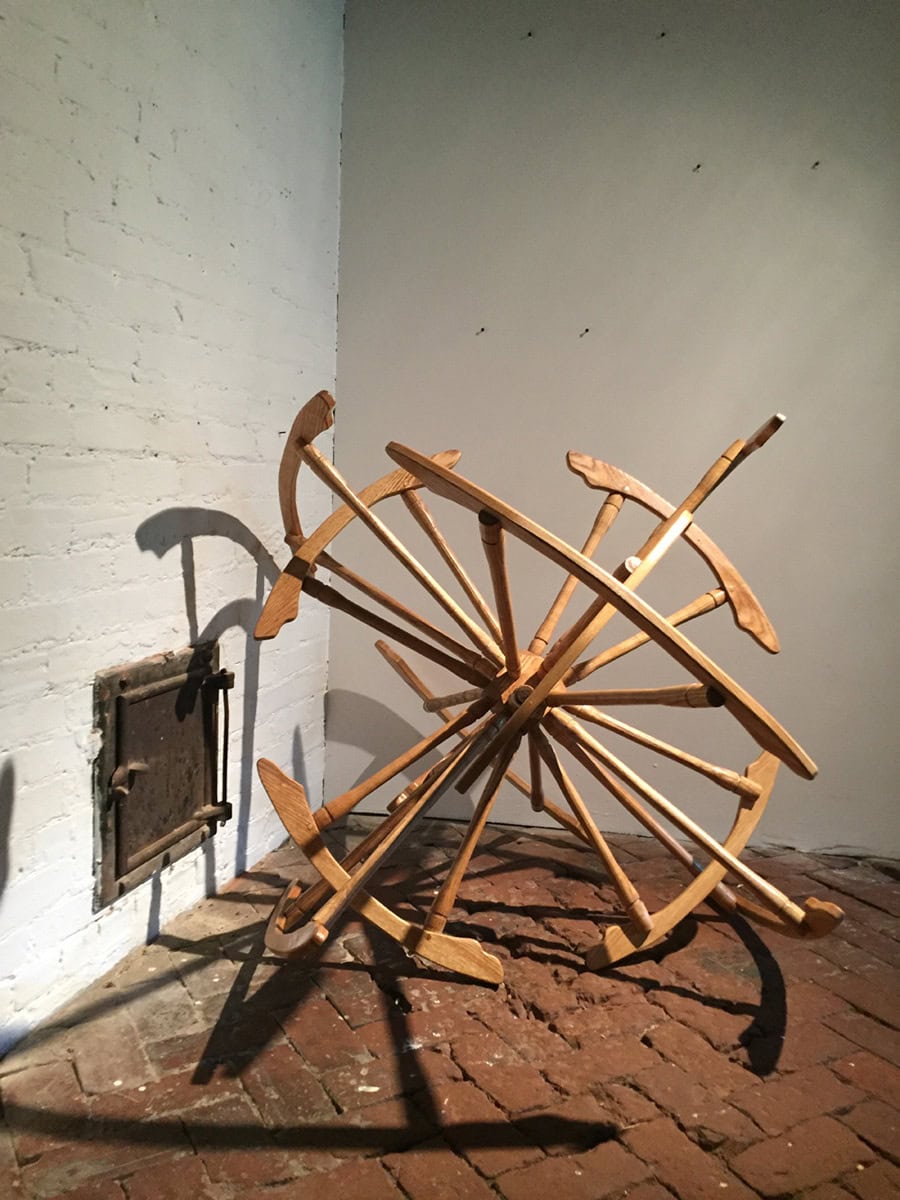
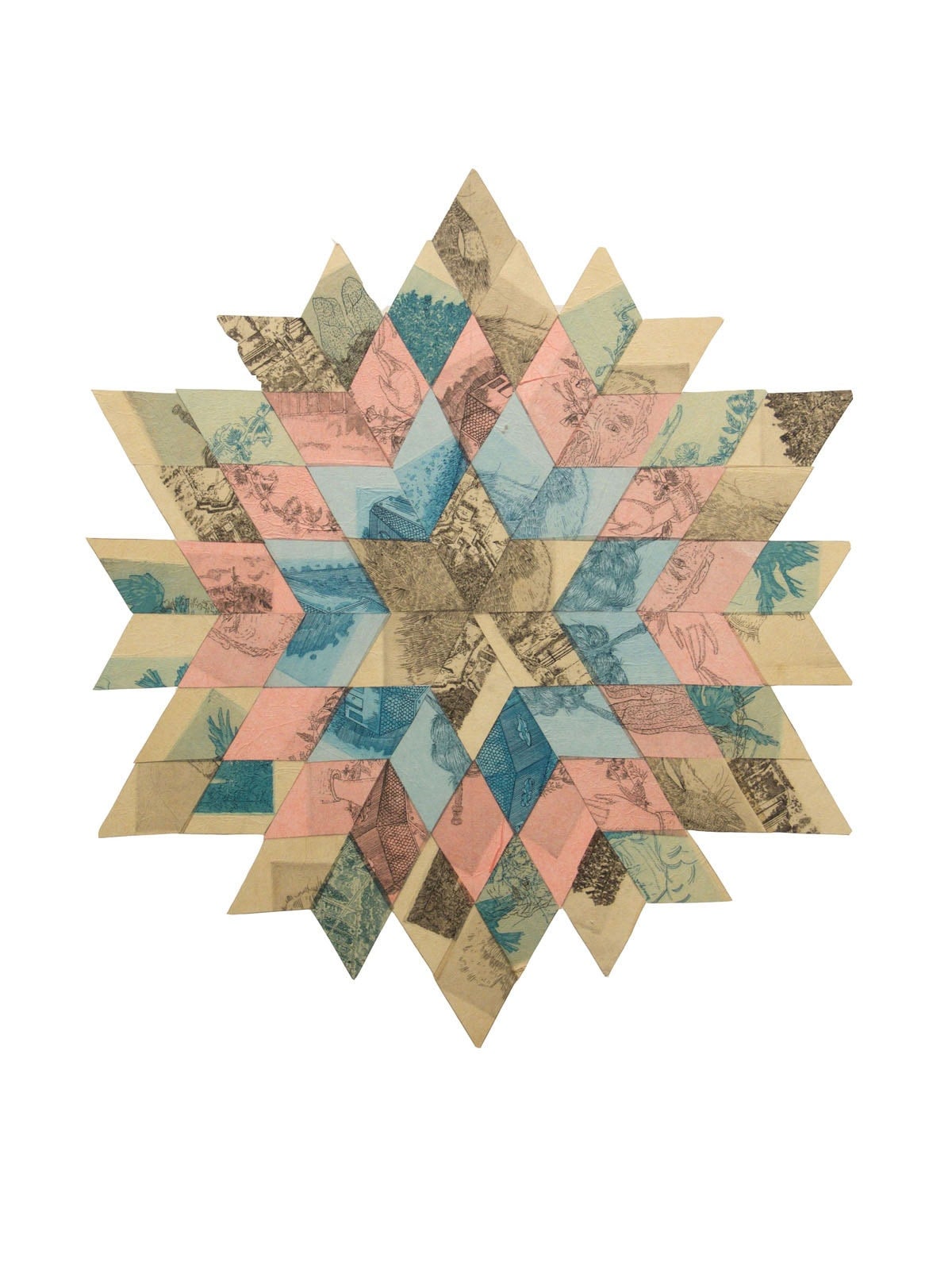
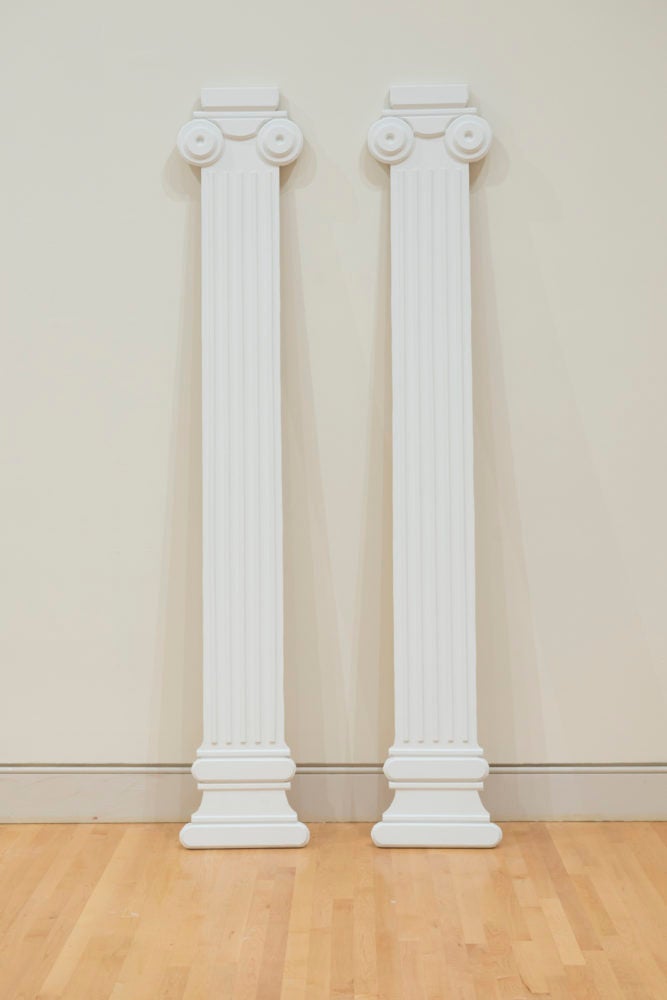
Historically, pillars and columns have been used architecturally to promote ideals and values, and they were adopted by America’s ‘Founding Fathers’ as a means to promote order, reason, and democracy. I visited some old plantation homes and was overwhelmed by their beauty, the craftsmanship of the crown moulding, and that felt like a distraction from the fact that these homes were built and maintained through the forced labor of enslaved human beings. The ceiling medallion being placed on the floor eluded to photographs of the South taken after the war glorifying it as this site of ruin in such a young country. This ruin of the South was linked to Greek and Roman ruins, romanticizing the ‘Golden Era’ of the South before the Civil War, when it really wasn’t a golden era at all. Unfortunately some movies and tourist sites still refer to it in that way.
Kaleena Stasiak
